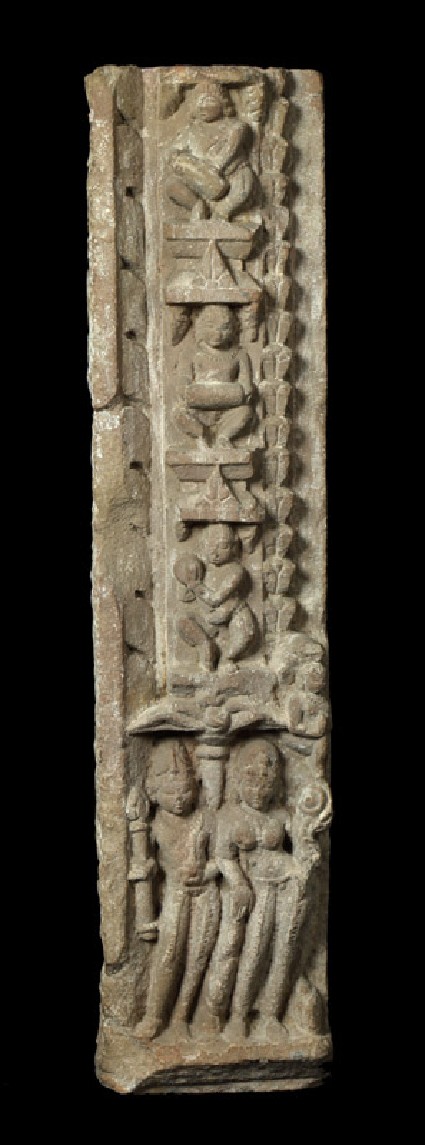Browse: 24 objects
- Reference URL
Actions
Part of a door jamb with musicians and figures, possibly gods
-
Details
- Associated place
-
Asia › India › west India › Rajasthan (possible place of creation)Asia › India › central India › Madhya Pradesh (possible place of creation)
- Date
- 11th - 12th century (1001 - 1200)
- Material and technique
- sandstone
- Dimensions
- 79 x 19 x 14.5 cm approx. (height x width x depth)
- Material index
- Technique index
- Object type index
- No. of items
- 1
- Accession no.
- EAOS.71
-
Further reading
Harle, J. C., and Andrew Topsfield, Indian Art in the Ashmolean Museum (Oxford: Ashmolean Museum, 1987), no. 55 on p. 46, p. 46, illus. p. 46
Location
-
- currently in research collection
Objects are sometimes moved to a different location. Our object location data is usually updated on a monthly basis. Contact the Jameel Study Centre if you are planning to visit the museum to see a particular object on display, or would like to arrange an appointment to see an object in our reserve collections.
Publications online
-

Indian Art in the Ashmolean Museum
The doors through which the Indian temple are entered, and particularly the entrance to the garbha-gṛha containing the liṅga or the principle image of the shrine, have a specially important place in the multiple symbolism of the temple. Through them the worshipper, either in person or through the surrogate form of the priest, makes a final entrance into the realm of the unmanifest or the divine. In consequence, jambs, lintel, even the doorstop, are richly carved with reliefs of divinities, guardians and auspicious figures, each in their proper place and enclosed by multiple bands of parallel mouldings, sometimes of the greatest beauty, which frame the doorway.
Here, in the rather simplified style characteristic of this late period, a male and female pair (mithuna) stands at the base in an emphasized flexed position. Since the man holds an emblem (difficult to identify), and the woman a lotus, they may in fact be gods. Above, musicians playing drums or cymbals are placed in small panels, each topped by a little triangular, the ultimate stylization of the caitya arch or gavākṣa [see EA1971.36]. The moulding running up beside the panels again represents the final reduction to the simplest terms of the splendid fan-palm mouldings of the Gupta period. The small figure with his hands pressed together in añjali, the gesture of worshipful respect, is a common feature. His snake-body, here not completed, would normally run up and across the lintel to meet its counterpart from the other doorway jamb, the tails often being held in the beak of Garuḍa, Viṣṇu’s bird vehicle.
© 2013 University of Oxford - Ashmolean Museum

